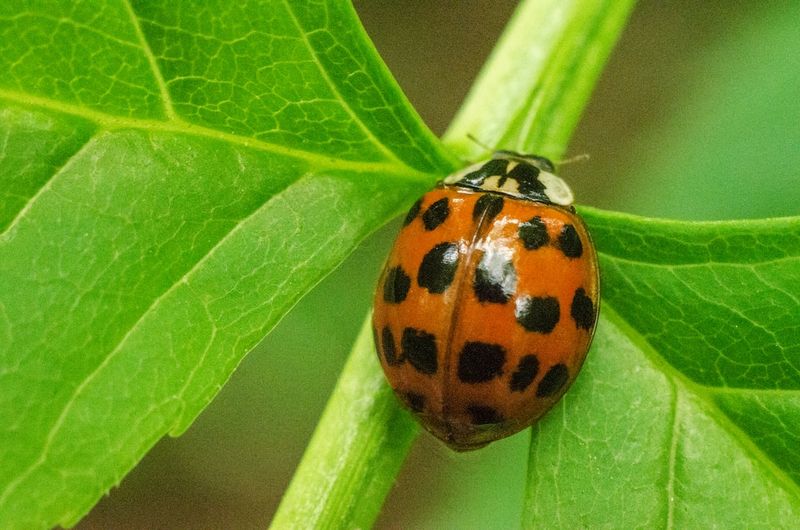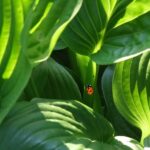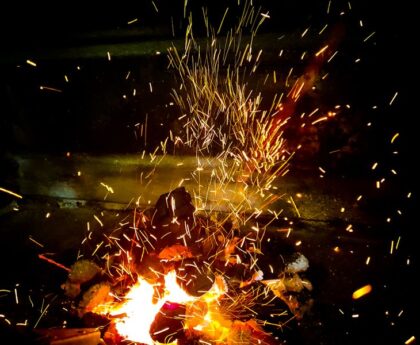Why You Might See More Ladybirds Around the House This Month
Nature By Arron Evans @ArronEvansNews
“MANY people will be reporting sightings of ladybirds in and around their houses this month. With temperatures outside beginning to lower as we enter the winter months, the little critters will be trying to seek out somewhere much warmer to live – including our homes. The month of October is, according to the experts, the start of hibernation season for ladybirds — and could be the reason the little red insects can be seen everywhere as they look for somewhere to snuggle up.”
As temperatures drop and winter approaches, it is common to spot ladybirds seeking refuge inside our homes. Ladybirds, also known as ladybugs, are harmless creatures that are often attracted to the warmth and shelter that houses provide. October marks the beginning of hibernation season for ladybirds, prompting an increase in sightings as they search for a cozy place to spend the winter months.

The Benefits of Ladybirds
While having ladybirds in our homes may surprise some, it is important to remember the benefits these little insects bring. Ladybirds are known for their role in controlling plant-eating insects, particularly aphids. By feasting on these pests, ladybirds contribute to crop protection and help maintain the delicate balance of the garden ecosystem.
Understanding Ladybirds
Here are a few quick facts about these fascinating creatures:
- The scientific name for a ladybird is ‘Coccinellidae septempunctata’.
- Their lifespan in the wild is generally around one year, with a maximum of two years.
- The average body length of a ladybird is up to 1cm.
- They can be found in various natural habitats, including grasslands, forests, cities, suburbs, and along rivers.
- There are approximately 5,000 different species of ladybirds worldwide.
- Most ladybirds have oval, dome-shaped bodies with six short legs. The markings on their backs can vary between species, ranging from spots to stripes or even no markings at all.
Conservation and Appreciation
While ladybirds may occasionally find their way into our homes, it is important to coexist with them peacefully. These insects contribute to the overall health of our gardens and ecosystems, and their presence should be considered a positive sign. Instead of trying to remove them, it is recommended to leave them undisturbed as they overwinter in a dormant state. They will eventually fly away in spring to find food and mate, completing their natural life cycle.
As we observe the surprising surge in ladybird sightings this month, let us appreciate the beauty and contribution of these tiny creatures and remember the importance of harmonious coexistence with nature.
Comments: Our rules We want our comments to be a lively and valuable part of our community – a place where readers can debate and engage with the most important local issues. The ability to comment on our stories is a privilege, not a right, however, and that privilege may be withdrawn if it is abused or misused. Please report any comments that break our rules. Read the rules here. Please sign in or register to comment.
Get involved with the news Send your news & photos

<< photo by Viktor Talashuk >>
The image is for illustrative purposes only and does not depict the actual situation.
You might want to read !
- Celebrating Excellence: The Birght Stars of the 2023 Signal Awards
- Title: An Intense Battle Unfolds: Live Coverage of England v Bangladesh in the Cricket World Cup 2023
- Cracking the code: Decoding the creators behind COVID nicknames
- The Mysterious Swarm: Decoding the Invasion of Ladybirds in Your Home
- Thunder Flies invade the UK: Examining the origins, impact, and management of these bothersome insects
- Exploring the Escalation: Hamas’ Intensive Rocket Assault on Ashkelon City
- Behind Closed Doors: Unveiling the Enigmatic Marriage of Nigel Harman
- 2023 Signal Awards Honor Trailblazers: Oprah, Michelle Obama, Jon …
- Hamas’ Ashkelon Warning: Imminent Major Rocket Barrage Raises Concerns




